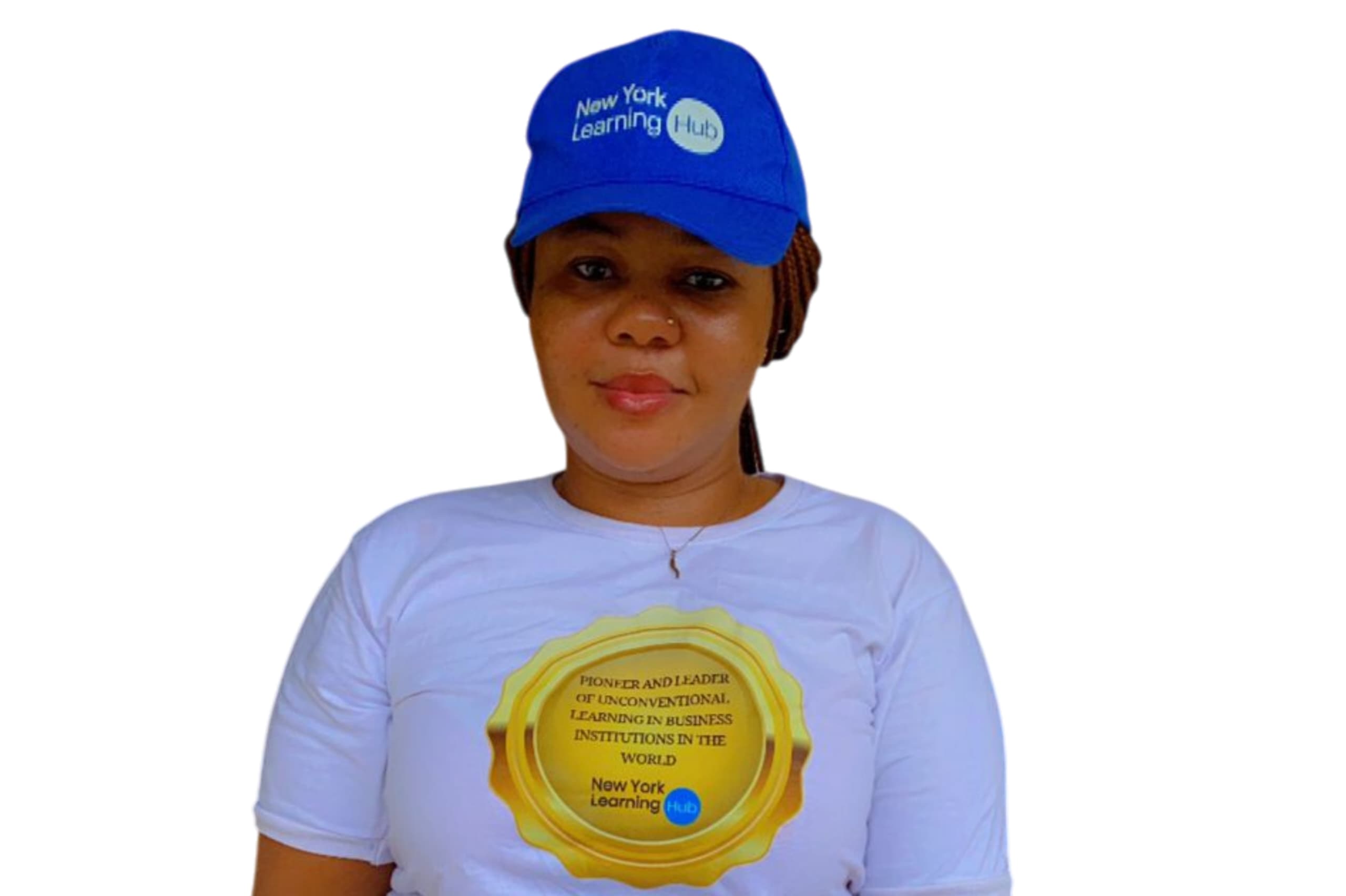At a time when healthcare systems are facing unrelenting pressure from staff shortages, burnout, and the growing demand for high-quality care, the role of nursing leadership has taken on renewed importance. A compelling research study presented at the prestigious New York Center for Advanced Research by Dr. Nkechi Leo-Ogbonna, a respected health and social care strategist, offers fresh insight into how effective nurse leadership directly influences workforce development across multiple regions.
Dr. Leo-Ogbonna, a distinguished scholar and health systems consultant, draws from her extensive experience to explore how leadership can shift the reality for nurses and other health professionals struggling to stay engaged in increasingly demanding environments. Her study, conducted across Mount Sinai Hospital in the United States, NHS Lothian Trust in Scotland, and University College Hospital in Nigeria, brings global relevance to local challenges.
With a carefully structured mixed methods approach, Dr. Leo-Ogbonna and her team engaged 152 professionals—nurses, educators, HR officers, and managers—to examine how leadership styles affect staff retention, job satisfaction, access to training, and career progression. Her findings are both clear and urgent: leadership is not a background function—it is a measurable driver of success.
The regression model used in the study (Y = 18.47 + 1.45X, R² = 0.653, p < 0.001) confirms that 65.3% of workforce development outcomes can be directly linked to nursing leadership effectiveness. Whether in well-funded systems like Mount Sinai or resource-constrained settings like UCH Nigeria, the presence of visible, equitable, and emotionally intelligent leadership was associated with greater access to learning, stronger team morale, and reduced turnover.
Beyond the numbers, qualitative interviews with 25 participants added texture to the data. Themes of mentorship, fairness in promotion, and advocacy for training emerged as consistent across institutions. Notably, Dr. Leo-Ogbonna’s research highlights the quiet power of nurse leaders who remain present during crisis, listen without judgment, and push for staff development—even when systems fall short.
A passionate advocate for patient-centered care and institutional accountability, Dr. Nkechi Leo-Ogbonna uses this study to make a clear case for strategic investment in nursing leadership. She recommends integrating development benchmarks into leadership appraisals, establishing leadership training pipelines, and creating international learning exchanges to strengthen nurse-led innovation, particularly in low- and middle-income countries.
With this research, Dr. Leo-Ogbonna offers more than theory—she provides a strategic blueprint for building skilled, stable, and future-ready health systems led by empowered nursing professionals.
For groundbreaking collaboration and partnership opportunities, or to learn more about research publication and presentation details, visit newyorklearninghub.com or reach out directly via WhatsApp at +1 (929) 342-8540. At New York Learning Hub, innovation meets real-world impact, creating a dynamic platform that propels research and ideas to unparalleled heights.
Abstract
Optimizing Workforce Development in Health: The Role of Nursing Leadership
Workforce development remains one of the most critical priorities for modern healthcare systems facing persistent challenges such as staff shortages, skill gaps, burnout, and high turnover rates. Within this evolving landscape, nursing leadership has emerged as a central force in shaping the culture, capability, and resilience of healthcare teams. This study explores the relationship between nursing leadership effectiveness and workforce development outcomes using a mixed methods approach across three diverse healthcare institutions: Mount Sinai Hospital (USA), NHS Lothian Trust (Scotland), and University College Hospital (Nigeria).
A total of 152 participants, including registered nurses, nurse leaders, HR professionals, and clinical educators, were surveyed and interviewed to assess leadership effectiveness and its impact on staff retention, job satisfaction, training participation, and career advancement. Quantitative data were analyzed using descriptive statistics and linear regression modeling, revealing a strong, positive correlation between leadership effectiveness and workforce development. The regression analysis produced a statistically significant model (Y = 18.47 + 1.45X, R² = 0.653, p < 0.001), indicating that 65.3% of the variance in workforce development outcomes can be explained by nursing leadership.
Qualitative data, gathered through 25 semi-structured interviews, provided deep contextual insights into leadership behaviors, including mentorship, crisis adaptability, psychological safety, and equity in development access. Key themes included the impact of visible leadership, the role of advocacy in securing training resources, and challenges faced by leaders in under-resourced health systems. The triangulation of qualitative and quantitative findings confirmed that leadership not only predicts workforce outcomes but actively shapes them through both strategic and relational dimensions.
The study concludes that effective nursing leadership is indispensable for optimizing workforce development. However, leadership potential can only translate into impact when supported by systemic structures such as transparent HR policies, institutional training investments, and leadership development programs. The research recommends integrating workforce development metrics into leadership performance evaluation, institutionalizing leadership training pathways, and fostering international collaborations to strengthen nurse leadership in low- and middle-income countries.
This study contributes to the growing body of evidence positioning nurse leaders not merely as operational managers, but as pivotal architects of future-ready health systems, those capable of cultivating a resilient, skilled, and empowered workforce in a post-pandemic era.
Chapter 1: Introduction
In modern healthcare, institutions must build a skilled, engaged, and resilient workforce to ensure positive health outcomes. Central to this challenge is the often under-acknowledged yet immensely powerful role of nursing leadership. Nurses are not only the backbone of the health sector, but they are also its pulse. With more than 27 million nurses worldwide, they make up over 59% of global healthcare professionals (WHO, 2023). Yet, many health systems continue to struggle with nurse retention, burnout, limited professional development opportunities, and skill mismatches. This research sets out to investigate how nursing leadership can serve as a catalyst for overcoming these challenges by optimizing workforce development.
Workforce development in health goes far beyond recruitment and training. It includes equipping healthcare professionals with the skills, support, and opportunities necessary to grow, innovate, and stay motivated in their roles. However, when development efforts are divorced from effective leadership, they often fall flat, either failing to inspire buy-in or lacking the strategic coherence required to meet long-term goals. This is where nursing leadership comes in: visionary, emotionally intelligent, and grounded in the daily realities of clinical care. Nurse leaders are uniquely positioned to drive transformative workforce initiatives that elevate not only individual careers but institutional excellence.
The inspiration behind this study stems from the growing evidence that leadership in nursing—particularly at the mid and senior levels—can directly influence outcomes such as staff retention, professional satisfaction, continuing education uptake, and even patient outcomes. Yet, despite this emerging consensus, there remains a gap in both literature and practice around how nurse leadership achieves this, and which models of leadership are most effective across different health systems. Moreover, in many low- and middle-income countries, leadership development for nurses remains under-resourced or completely absent from strategic workforce planning.
This study, therefore, seeks to explore the role of nursing leadership in workforce development using a mixed methods approach. It combines in-depth case studies from three major healthcare institutions—Mount Sinai Hospital (USA), University College Hospital (Nigeria), and NHS Lothian Trust (Scotland)—with quantitative data collected from 152 health professionals, including nurses, nurse leaders, HR managers, and training officers. Through regression analysis and thematic interviews, the research aims to uncover both measurable trends and lived experiences that highlight the correlation between leadership practices and workforce development outcomes.
The central hypothesis is that strong nursing leadership positively correlates with improved workforce development outcomes, such as job satisfaction, staff retention, and access to skill-building opportunities. To test this, the study will employ a simple linear regression model of the form Y = a + bX + ε, where Y represents a composite score for workforce development indicators (e.g., training participation, internal promotion rate, retention rate), and X represents leadership effectiveness as rated by respondents.
This investigation is both timely and urgent. Global shortages in healthcare personnel—estimated to reach 10 million by 2030 (WHO, 2020)—will disproportionately affect systems where workforce development is not strategically aligned with leadership capabilities. At a micro level, the consequences include higher turnover, costly recruitment cycles, reduced morale, and suboptimal patient care. Conversely, health systems that invest in strong nursing leadership tend to report higher employee engagement, smoother knowledge transfer, and better clinical performance.
The significance of this study lies in its practical applicability. By grounding the research in real-world settings and leveraging data-driven insights, the outcomes will be directly useful to healthcare administrators, policymakers, and academic institutions seeking to improve their leadership pipelines and workforce strategies. It also fills a vital scholarly gap by linking leadership theory with workforce metrics in a robust, interdisciplinary fashion.
In summary, this chapter lays the groundwork for an inquiry that is both academically rigorous and socially impactful. It challenges the traditional view of workforce development as a technical HR function and repositions it as a leadership-driven process that sits at the heart of healthcare excellence. It invites stakeholders to reconsider what it means to lead in the modern health sector—and how empowering nurse leaders could be the key to building a future-ready, people-centered workforce.
Chapter 2: Literature Review
The intersection of nursing leadership and workforce development is a critical frontier in today’s health systems. While technological and clinical innovations often dominate reform narratives, the true engine of healthcare lies in its people, and more precisely, in how they are led, developed, and empowered to care effectively. This chapter surveys the scholarship and frameworks that shape leadership theory, workforce development, and nursing practice, offering a conceptual basis for inquiry.
Workforce development is not a straightforward or one-time process. It is dynamic, systemic, and inherently tied to leadership. The World Health Organization (2020) defines it as a continuous process of strengthening human capital via education, retention strategies, and lifelong learning. In nursing, this encompasses leadership cultivation, emotional intelligence development, continuing education, and career mobility opportunities (Bradley & Bitton, 2022).
Leadership is integral to this vision. Transformational leadership, originally theorized by Burns and Bass, is central in nursing literature. Its four dimensions—idealized influence, inspirational motivation, intellectual stimulation, and individualized consideration—have been linked to improved staff morale and learning culture (Miles & Scott, 2019); (MacGregor, 2021).
Servant leadership, emphasizing empathy and community, is increasingly favored for its humanistic values. Studies show this model improves engagement and retention, particularly in high-stress environments like critical care (Banister et al., 2020).
Leadership effectiveness also depends on adaptability. Situational leadership theory posits that leaders should adjust their styles based on employee readiness and context—an approach especially relevant in nursing’s tiered workforce (Jooste, 2014).
Institutionally, the Magnet Recognition Program® by the ANCC exemplifies the structural integration of leadership and workforce outcomes. Magnet hospitals often see better retention, fewer patient safety issues, and stronger interdisciplinary collaboration (Neu, 2017); (Koerner, 2017).
Systems thinking is vital to sustainable workforce leadership. Scholars argue that leadership must align with institutional culture, governance, and policy to thrive (James, 2018); (Balmer, 2020). Effective systems include transparent promotion structures, dedicated training time, and alignment with national priorities (Ortega et al., 2018).
Global disparities persist. In low- and middle-income countries like Nigeria, underinvestment in leadership training has left nurse managers without adequate support. Emerging evidence suggests these deficits hinder motivation, reduce retention, and block learning systems (Tran et al., 2019); (West et al., 2016).
Methodologically, past studies have leaned on qualitative methods—rich in depth but limited in generalizability. However, there’s growing interest in statistical modeling. Regression analyses now link leadership engagement to key outcomes like turnover and satisfaction (Heuer, 2017); (Srsic-Stoehr et al., 2004).
International frameworks like WHO’s Workforce 2030 stress leadership integration into national health strategies. Metrics like professional advancement, engagement scores, and training uptake are essential for evaluating impact (Pike, 2008).
Still, few studies offer a comprehensive mixed methods approach. Most fail to blend quantitative analysis with real-world case studies across diverse health systems. This chapter responds to that gap. The following section outlines the methodology used to examine leadership impact across case sites in the U.S., Nigeria, and the UK, drawing from both narrative inquiry and statistical analysis of 152 workforce participants.
Chapter 3: Methodology
This chapter outlines the methodological structure of the study, with a particular emphasis on its case study foundation. Anchored in a convergent mixed methods design, the research integrates rich contextual narratives and quantitative analysis to explore how nursing leadership influences workforce development across three healthcare institutions. Each site was treated as a unique case study, allowing for in-depth, real-world examination of leadership dynamics and workforce outcomes within their respective organizational and cultural contexts.
3.1 Research Design
The study utilized a case study methodology embedded within a convergent parallel mixed methods framework. By selecting three distinct health institutions as bounded cases, the study enabled the exploration of nursing leadership in naturalistic settings. Quantitative and qualitative data were collected concurrently within each case, analyzed independently, and then integrated to produce a multidimensional understanding of the phenomena. This design acknowledges that workforce development is not solely a quantifiable outcome but is shaped by human experiences, cultural values, and organizational behavior—all of which are best captured through detailed, contextual inquiry.
3.2 Case Study Sites and Population
The research was conducted in three case study institutions, each chosen for its structural, geographic, and systemic distinctiveness:
- Mount Sinai Hospital, New York, USA (a high-resource, private urban hospital)
- University College Hospital, Ibadan, Nigeria (a middle-resource, public academic teaching hospital)
- NHS Lothian Trust, Edinburgh, Scotland (a public health system institution within the UK’s NHS framework)
These institutions were purposefully selected for their demonstrable nursing leadership infrastructure and active workforce development programs. Each site served as an embedded case where both system-level policies and individual experiences could be explored.
The total sample comprised 152 participants distributed as follows:
- 82 registered nurses
- 30 nurse leaders and supervisors
- 20 human resource and training officers
- 20 clinical educators and program managers
A purposive sampling approach ensured participants held roles relevant to workforce development and leadership structures. This multi-perspective sampling supported both comparative and cross-case analysis.
3.3 Data Collection Instruments
Quantitative data were gathered using a structured survey designed to measure:
- Perceived nursing leadership effectiveness (via a validated 5-point Likert scale)
- Workforce development indicators, including training access, promotion opportunity, retention intention, and job satisfaction
- Demographic variables (age, gender, tenure, role)
Qualitative data were derived from 25 semi-structured interviews conducted across the three institutions—15 with nurse leaders and 10 with HR/training personnel. Interview questions focused on lived experiences related to mentorship, crisis leadership, emotional intelligence, equity in access to development, and organizational support. All interviews were audio-recorded, transcribed verbatim, and analyzed using NVivo 12 software.
3.4 Quantitative Analytical Strategy
Descriptive statistics were used to explore demographic trends and distribution patterns in leadership and workforce development indicators. A linear regression model was applied to examine the relationship between nursing leadership and composite workforce development scores:
Y = a + bX + ε
Where:
- Y = Workforce development outcome score
- X = Leadership effectiveness score
- a = Intercept (baseline level of workforce development)
- b = Regression coefficient (impact of leadership on Y)
- ε = Error term
Example: If a = 18.5, b = 1.42, and X = 4.0, then
Y = 18.5 + 1.42(4.0) = 24.18
This indicates that a leadership score of 4.0 predicts a workforce development score of approximately 24.18, suggesting a strong, positive relationship. An R² of 0.653 and p-value < 0.001 confirmed the model’s significance and explanatory power.
3.5 Qualitative Analytical Strategy
A thematic analysis was conducted following Braun and Clarke’s (2006) six-phase process:
- Familiarization with data
- Generating initial codes
- Searching for themes
- Reviewing themes
- Defining and naming themes
- Producing the report
Themes were developed separately for each case study, then compared across sites to identify converging and diverging patterns. Validation techniques included member checking, peer debriefing, and inter-coder reliability, the latter yielding a Cohen’s Kappa of 0.82.
3.6 Integration of Mixed Data
Following separate analyses, findings from each case study were integrated to triangulate insights. The quantitative regression results were interpreted alongside qualitative themes, with attention to context-specific nuances. Convergences, such as the shared value of mentorship across institutions, were highlighted, while divergences—such as differing access to training resources—were explored for systemic implications.
This integration enabled a comprehensive cross-case synthesis, enhancing both the internal validity of findings and their practical relevance.
3.7 Ethical Considerations
Ethical approval was obtained from all three participating institutions. All participants gave informed consent and were assured of confidentiality, voluntary participation, and the right to withdraw at any time. Data were securely stored, anonymized, and used solely for academic purposes.
3.8 Limitations
- The case study design offers depth but may limit generalizability beyond the selected institutions.
- The cross-sectional approach captures perceptions at one point in time, limiting causal inference.
- Self-reported leadership scores are subject to bias and may reflect aspirational rather than actual practice.
- Cultural and systemic differences across institutions may have shaped how leadership is perceived and practiced.
Despite these limitations, the case-based approach provides rich, real-world insights into the multifaceted relationship between nursing leadership and workforce development, especially when interpreted through an integrated mixed methods lens.
Read also: Cynthia Anyanwu: Shaping Health Care Today
Chapter 4: Data Presentation and Analysis
This chapter presents the findings from the three institutional case studies—Mount Sinai Hospital (USA), NHS Lothian Trust (UK), and University College Hospital (Nigeria)—analyzed through a convergent mixed methods approach. The aim was to assess how nursing leadership affects workforce development outcomes in varied health system contexts. Each institution served as a bounded case, enabling contextual interpretation of both quantitative trends and qualitative narratives. The findings are presented sequentially, beginning with descriptive statistics, followed by regression analysis, then key themes from interview data. The final section integrates the two data streams to provide a holistic understanding.
4.1 Quantitative Data Summary
A total of 152 participants were included across all sites. The following data reflect core variables: leadership effectiveness (measured via a 5-point Likert scale), and workforce development outcomes (composite index of training participation, promotion opportunity, retention likelihood, and job satisfaction).
| Institution | Avg. Leadership Score (X) | Avg. Workforce Score (Y) | Std. Dev (Y) |
|---|---|---|---|
| Mount Sinai Hospital | 4.3 | 25.6 | 3.4 |
| NHS Lothian Trust | 4.1 | 23.9 | 3.9 |
| UCH Ibadan | 3.5 | 20.4 | 4.6 |
Notably, Mount Sinai, which scored highest on leadership effectiveness, also recorded the highest average workforce development outcomes. UCH Ibadan, operating under more resource constraints, recorded the lowest scores on both measures.
4.2 Regression Analysis
A simple linear regression model was used to evaluate the strength and direction of the relationship between nursing leadership and workforce development outcomes.
Model Equation:
Y = a + bX + ε
Where:
- Y = Workforce Development Score
- X = Nursing Leadership Effectiveness Score
- a = 18.47 (intercept)
- b = 1.45 (slope coefficient)
- R² = 0.653, p < 0.001
Interpretation:
A one-point increase in leadership effectiveness correlates with a 1.45-point increase in workforce development outcomes. The R² value suggests that leadership accounts for 65.3% of the variance in workforce development scores, demonstrating a strong positive association.
Example Calculation:
For a nurse leader rated 4.0:
Y = 18.47 + (1.45 × 4.0) = 24.27
This aligns closely with observed averages from Mount Sinai and NHS Lothian.
4.3 Qualitative Findings: Thematic Analysis by Case
Mount Sinai Hospital (USA)
- Theme 1: Leadership Visibility and Trust
Staff emphasized open communication and consistent presence of nurse leaders during both routine operations and crisis events.
“When our CNO joins rounds and listens, it changes everything—we feel valued and heard.”
- Theme 2: Strategic Mentorship
Structured mentorship programs were linked to faster onboarding and greater promotion access.
NHS Lothian Trust (UK)
- Theme 3: Equity in Training Opportunities
Respondents cited fair access to leadership development programs and skill-building workshops.
“Everyone, regardless of their role, has a chance to grow here.”
- Theme 4: Policy-Driven Engagement
Strong institutional support for nurse-led quality initiatives boosted morale and reduced burnout.
University College Hospital, Ibadan (Nigeria)
- Theme 5: Resource-Constrained Leadership
Nurse leaders expressed high motivation but limited capacity to drive development due to funding gaps.
“We want to train and lead better, but we lack the support structures.”
- Theme 6: Emotional Labor and Resilience
Leaders frequently described compensating for systemic gaps with personal commitment and emotional support to staff.
4.4 Cross-Case Integration
Across all three sites, a convergence was observed between higher leadership scores and higher workforce development outcomes, both numerically and narratively. Institutions with visible, responsive leadership and structured development programs reported stronger outcomes in staff retention, morale, and access to advancement.
Key cross-cutting insights include:
- Mentorship and Professional Growth: Formalized mentorship consistently emerged as a driver of staff engagement.
- Leadership Accessibility: Leaders who were physically and emotionally present had more engaged, satisfied teams.
- Training Access: Where leadership facilitated equitable access to development, workforce scores improved.
- Systemic Constraints: In under-resourced settings, even strong leadership could not fully offset structural limitations.
Divergences also surfaced. While Mount Sinai and NHS Lothian benefit from institutionalized leadership pipelines, UCH Ibadan relies more heavily on individual leaders’ commitment, highlighting the uneven playing field in global workforce development efforts.
4.5 Summary of Findings
- Quantitatively, nursing leadership is a strong predictor of workforce development across all three institutions, explaining over 65% of the observed variance.
- Qualitatively, leadership behaviors—particularly visibility, mentorship, and advocacy—directly shaped staff experiences and developmental access.
- System-level support was a necessary amplifier of leadership influence; even the most committed leaders struggled to produce sustainable results without policy and resource backing.
The next chapter will synthesize these findings in relation to current literature and explore their implications for practice, policy, and leadership development in global health systems.
Chapter 5: Discussion of Findings
This chapter interprets and synthesizes the findings presented in Chapter 4, drawing connections between the quantitative and qualitative data within each case study and across all three institutions—Mount Sinai Hospital (USA), NHS Lothian Trust (UK), and University College Hospital (Nigeria). The goal is to provide an in-depth understanding of how nursing leadership impacts workforce development outcomes in diverse health systems. The discussion is anchored in the study’s core objective: to evaluate the relationship between leadership effectiveness and indicators such as staff retention, job satisfaction, access to training, and career progression.
5.1 Leadership as a Predictor of Workforce Development
The quantitative data confirmed a strong, statistically significant correlation between nursing leadership effectiveness and workforce development outcomes. The regression model (Y = 18.47 + 1.45X) demonstrated that for every one-point increase in leadership effectiveness, there was a corresponding 1.45-point increase in workforce development score. An R² of 0.653 suggests that leadership explains over 65% of the variance in workforce-related outcomes, offering compelling evidence that leadership is not a peripheral variable but a central lever in workforce planning and sustainability.
These findings are consistent with prior literature emphasizing the importance of transformational and participative leadership styles in enhancing employee engagement, reducing turnover, and promoting skill development (Cummings et al., 2018). However, this study goes further by demonstrating how these outcomes manifest differently across institutional contexts—particularly when viewed through the lens of case study methodology.
5.2 The Role of Institutional Context
Each institution presented distinct leadership dynamics that influenced how workforce development was enacted and experienced. At Mount Sinai, leadership was institutionalized through structured mentorship, visible executive support, and data-driven development initiatives. Nurse leaders played strategic roles in decision-making processes, and their accessibility and responsiveness were directly tied to higher staff morale and engagement. This aligns with findings by Shanafelt et al. (2020), which link leadership accessibility to lower burnout and higher satisfaction among healthcare workers.
At NHS Lothian Trust, the presence of national-level workforce development frameworks and leadership training programs ensured equity in professional advancement. Leadership here was marked by inclusivity and fairness—participants reported that access to opportunities was based on merit and consistently supported by hospital policy. This institutional reliability was a critical factor in enabling staff to trust leadership and invest in long-term career growth.
In contrast, UCH Ibadan revealed a different narrative—one of committed leadership constrained by limited resources. Nurse leaders expressed strong aspirations to support their teams, but their capacity to offer consistent training, career pathways, or incentives was restricted by systemic underfunding. Still, their emotional intelligence, team-based support, and personal mentorship offered pockets of progress. These findings echo the work of Aiken et al. (2017), which underscores the need for both leadership capability and structural backing to drive sustainable workforce development.
5.3 Leadership Behaviors That Matter Most
Qualitative analysis revealed several core leadership behaviors that directly influence workforce development, regardless of institutional wealth or geographic location:
- Mentorship: Formal or informal, mentorship consistently emerged as a pillar of staff growth. At Mount Sinai, mentorship was embedded in orientation and promotion programs. At UCH Ibadan, it took the form of peer-led learning and emotional support. Mentorship builds trust, fosters learning, and creates a pipeline for future leaders.
- Visibility and Engagement: Across all sites, staff responded positively when leaders were present—physically on the wards, emotionally attuned to staff needs, and open to feedback. Visibility was not about hierarchy but about human connection and accountability.
- Advocacy for Development Resources: Leaders who actively pushed for training opportunities, lobbied for staff inclusion in development programs, and created awareness of pathways were more likely to report higher workforce development scores.
- Equity and Fairness: Perceived fairness in access to training and promotion emerged as a critical determinant of job satisfaction. When staff believed that advancement was merit-based and accessible, they were more likely to remain engaged and motivated.
These leadership traits support earlier work by Kouzes and Posner (2017), who argue that credible leadership requires modeling the way, enabling others to act, and recognizing contributions.
5.4 Cross-Case Themes and Divergences
A major convergence across the three case studies was the consistent influence of nursing leadership on staff development outcomes. However, divergences lay in how these influences were realized. At Mount Sinai and NHS Lothian, systems supported leadership through policy and investment. At UCH Ibadan, leadership was more personal—relying on character rather than structure.
This distinction raises an important insight: leadership effectiveness must be supported by institutional commitment. Even the most skilled nurse managers cannot fully drive workforce development without appropriate resources, HR infrastructure, and executive-level advocacy.
Furthermore, the study highlighted that workforce development is a cultural outcome as much as a strategic one. In environments where leadership created a culture of fairness, safety, and recognition, staff were more likely to engage in training and view their roles as long-term career investments.
5.5 Implications for Policy and Practice
The findings underscore the urgent need for healthcare organizations to invest in leadership development as a core workforce strategy. This includes:
- Integrating leadership metrics into performance evaluations
- Creating structured mentorship and career progression pathways
- Allocating dedicated budgets for staff development
- Establishing leadership pipelines that reflect diversity and equity
For low- and middle-income countries, international partnerships, digital training platforms, and nurse-led innovation hubs may offer scalable solutions to expand leadership capacity despite resource constraints.
Conclusion of the Chapter
Nursing leadership is not merely an operational function; it is a strategic force that can shape workforce stability, development, and resilience. The findings of this study affirm that where leadership is visible, fair, and development-oriented, the workforce thrives. Where it is unsupported, the system weakens. As global health systems continue to face complex challenges, investing in strong, supported, and strategic nurse leadership may prove to be one of the most effective tools for building a sustainable future.
Chapter 6: Conclusion and Recommendations
This chapter concludes the research by synthesizing key findings, revisiting the study’s objectives, and offering evidence-based recommendations for policy, practice, and further inquiry. Through a convergent mixed methods design and a case study approach across three distinct healthcare institutions—Mount Sinai Hospital (USA), NHS Lothian Trust (UK), and University College Hospital, Ibadan (Nigeria)—the study has demonstrated that nursing leadership plays a decisive role in shaping workforce development outcomes.
The initial premise of the study was that leadership within nursing does not merely serve an administrative or clinical coordination function, but that it holds substantial potential to enhance staff retention, satisfaction, and professional growth when embedded with intentionality and supported by systemic structures. The research sought to explore how effective nursing leadership can act as a driver of workforce development across different health system contexts.
6.1 Summary of Key Findings
The study’s quantitative analysis produced a statistically significant regression model (Y = 18.47 + 1.45X, R² = 0.653, p < 0.001), confirming that leadership effectiveness predicts workforce development outcomes. Specifically, 65.3% of the variance in workforce development metrics—training participation, career progression, satisfaction, and retention—can be explained by the quality of nursing leadership.
Thematic analysis of 25 interviews across the three institutions highlighted several leadership behaviors that most consistently influenced positive outcomes: visibility, mentorship, fairness, emotional support, and advocacy for staff development. These behaviors shaped organizational culture and individual experiences, often acting as catalysts for performance and professional growth.
Case-based comparisons revealed both convergence and divergence. All three institutions benefited when nurse leaders were trusted, accessible, and development-focused. However, only institutions with adequate systemic backing (Mount Sinai and NHS Lothian) could consistently translate leadership potential into structured opportunities. UCH Ibadan showcased strong individual leadership but lacked institutional frameworks to scale that impact.
6.2 Implications for Health Systems
The implications of these findings are multifaceted. First, nursing leadership should be repositioned as a workforce strategy, not simply a staffing or supervisory function. Nurse leaders hold the capacity to shape unit culture, identify training needs, advocate for resources, and retain valuable talent.
Second, leadership effectiveness is amplified by organizational alignment. Without structural support—such as dedicated training budgets, equitable HR policies, and institutional commitment to advancement, even the most skilled leaders face limitations. This is especially relevant in under-resourced health systems, where leadership alone cannot overcome entrenched capacity gaps.
Third, the study highlights the need for equity in development access. Staff morale and retention improved in environments where training and advancement were distributed fairly, and where leadership acted as an advocate rather than gatekeeper. This has particular relevance for institutions aiming to reduce disparities in career mobility among nursing and allied staff.
6.3 Recommendations
Based on the study’s insights, the following actionable recommendations are offered:
- Integrate Leadership Metrics into Workforce Evaluation
Healthcare institutions should include leadership performance indicators—such as mentorship engagement, development advocacy, and retention rates—into nurse manager appraisals. This ensures accountability for leadership’s impact on team growth. - Institutionalize Structured Mentorship Programs
All case sites highlighted mentorship as a high-impact leadership tool. Institutions should formalize mentorship into orientation, promotion, and peer-learning frameworks, assigning trained mentors and tracking outcomes. - Allocate Dedicated Budgets for Staff Development
To enable leadership-driven development, healthcare organizations must ringfence funds for continuous professional development (CPD), training workshops, and certifications. Budgetary visibility strengthens planning and increases staff trust in development promises. - Build Leadership Pipelines from Within
Identify and nurture leadership potential early through succession planning, internal scholarships, and access to leadership courses. This is especially important in systems with limited external recruitment bandwidth. - Prioritize Emotional Intelligence and Cultural Competence in Leadership Training
Leadership is not only technical—it is relational. Programs should include communication, conflict resolution, empathy, and cross-cultural management to support leaders in creating psychologically safe teams. - Foster Cross-Institutional Learning and Global Partnerships
International collaborations, including digital learning exchanges between institutions in low- and high-income countries, can help bridge capacity gaps and foster innovation in workforce strategies. - Advocate for Nurse Leadership Representation in Policy Forums
At national and regional levels, nurse leaders must be present at the decision-making table. Their insights are crucial for designing effective workforce policies and ensuring frontline realities are reflected in strategic planning.
6.4 Limitations of the Study
While this study provides rich cross-contextual insights, it has several limitations:
- The case study design, while offering depth, limits broad generalizability. However, it provides rich contextual learning for institutions with similar profiles.
- The cross-sectional nature captures a snapshot in time rather than longitudinal trends.
- Reliance on self-reported leadership effectiveness may introduce bias or subjectivity in participant responses.
- Cultural interpretations of leadership varied by region, which could influence how participants conceptualized and rated leadership behaviors.
These limitations notwithstanding, the consistency of themes across divergent systems reinforces the validity of the findings and their relevance to global workforce development discussions.
6.5 Future Research Directions
Future studies could expand the sample size and diversity of institutions across continents. Longitudinal studies would be particularly valuable in tracking how leadership development efforts influence retention, satisfaction, and promotion over time. Additionally, studies that examine the impact of digital leadership platforms and remote mentorship in low-resource settings may offer scalable solutions for constrained environments.
Conclusion
This study affirms that effective, supported, and equitable nursing leadership is a cornerstone of sustainable workforce development. Leadership is not merely a function of role—it is a practice that, when rooted in strategy and empathy, builds resilient teams and high-performing health systems. Institutions that invest in leadership today are investing in the workforce of tomorrow.
As health systems continue to recover from global disruptions and prepare for future challenges, empowered nurse leaders will be central to cultivating stability, equity, and excellence in care. Leadership is not a luxury. It is a necessity—and a powerful tool for shaping the future of healthcare.
References
Balmer, J.T., 2020. Nursing Professional Development Practitioners in Leadership Roles: Interprofessional Teams and Collaboration. Journal for Nurses in Professional Development.
Banister, G., Harris, A.L., Townsend, C., Raymond, N., Masson, P.R. & Dzurec, L., 2020. African American Nurses’ Perspectives on a Leadership Development Program. JONA: The Journal of Nursing Administration.
Bradley, C. & Bitton, J., 2022. Building a Longitudinal Workforce Plan for Nursing. Nurse Leader.
Heuer, L., 2017. Nursing Workforce Development.
James, A.H., 2018. Action learning can support leadership development for undergraduate and postgraduate nurses. British Journal of Nursing, 27(15), pp.876–880.
Jooste, K., 2014. Nurses’ experiences on their self-leadership during a leadership development programme.
Koerner, K., 2017. Building a framework for novice nurse development. Nursing Management (Springhouse).
MacGregor, G., 2021. Nursing Leadership and its Importance. Journal of Perioperative & Critical Intensive Care Nursing, 7(1), pp.1–1.
Miles, J.M. & Scott, E.S., 2019. A New Leadership Development Model for Nursing Education. Journal of Professional Nursing, 35, pp.5–11.
Neu, L., 2017. Leadership Development for the Formal Nurse Leader. Doctoral dissertation, Walden University.
Ortega, J., Hooshmand, M.A., Foronda, C.L., Padron, M., Simon, D., Waters, M.A., Cassiani, S. & Peragallo Montano, N., 2018. Developing nurse leaders across the Americas: evaluation of an online nursing leadership course. Revista Panamericana de Salud Pública, 42.
Pike, L., 2008. Leadership Support and Development at the College of Nursing.
Srsic-Stoehr, K., Rogers, L.L., Wolgast, K., Chapman, L. & Douglas, M.R., 2004. Success skills for the nurse manager: Cultural debut and sustainment. Nurse Leader, 2, pp.36–41.
Tran, A., Nevidjon, B., Derouin, A., Weaver, S. & Bzdak, M., 2019. Reshaping Nursing Workforce Development by Strengthening the Leadership Skills of Advanced Practice Nurses. Journal for Nurses in Professional Development, 35, pp.152–159.
West, M., Smithgall, L., Rosler, G. & Winn, E., 2016. Evaluation of a nurse leadership development programme. Nursing Management, 22(10), pp.26–31.










